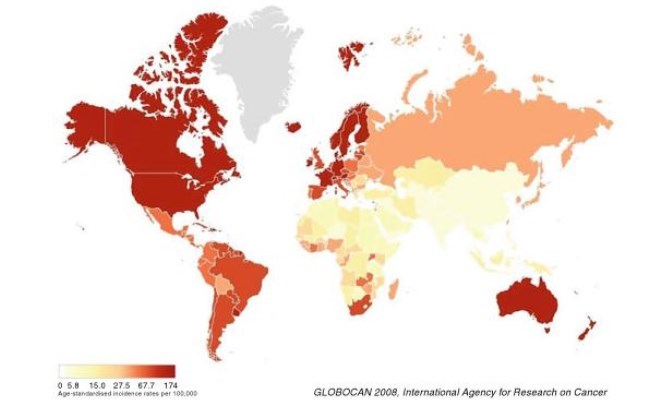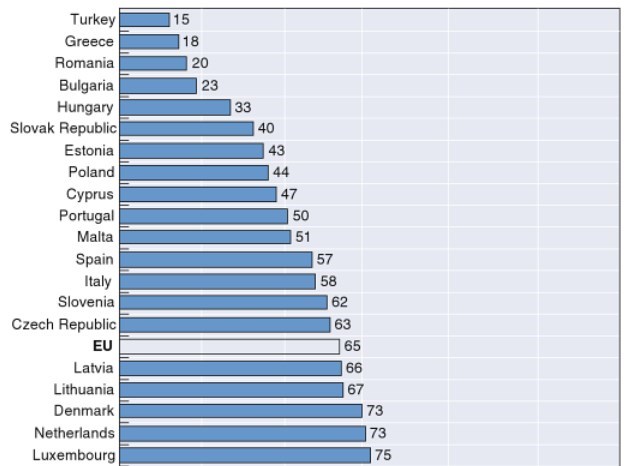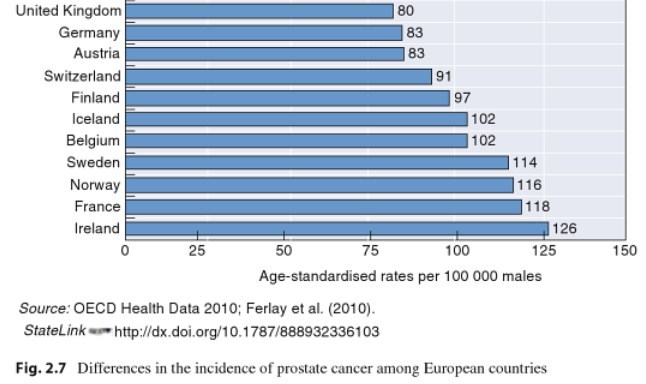Overview Prostate Cancer and Vitamin D
Vitamin D both prevents and treats Prostate Cancer somewhat
See also Prostate Cancer in Vitamin D Life
All items in category Prostate Cancer and Vitamin D items
Examples
Prostate Cancer long term survival 1.7 X more likely if high level of vitamin D – Jan 2016
High PSA readings with Prostate Cancer 4 times more likely if poor Vitamin D receptor – March 2016
Aggressive Prostate Cancer in blacks with low vitamin D – 7X more likely if added Calcium – Jan 2017
- Probably better than 40% reduction if 40 ng of Vitamin D and minimize Calcium
Prostate cancer in black men is 1.6 times more likely if a poor Vitamin D Receptor – Feb 2017
- Probably better than 40% reduction if 40 ng of Vitamin D and improve Receptor activation (8 ways)
Low-Grade Prostate Cancer 70 percent less likely to progress if good level of Omega-3 – June 2018
- Might prevent Prostate Cancer with Omega-3 and Vitamin D
The use of Vitamin D to prevent prostate cancer doubled in a decade – May 2019
Prostate cancer patients in Jamaica were 5X more likely to die of PC if low vitamin D - Sept 2022
Can take 40,000 IU of vitamin D daily before prostate cancer surgery – RCT March 2013
The Meta-analysis of Prostate Cancer
{category}
Vitamin D prevents/treats Prostate Cancer much better when there is not excess Calcium
Prostate cancer risk increase with Vitamin D (other studies disagree) – meta-analysis Jan 2018 prevention
Prostate cancer reduced when 4000 IU vitamin D was added– Hollis RCT April 2015 treatment
7X increase in stage IV Prostate Cancer survival when vitamin D greater than 32 ng – May 2013
Never too late to have vitamin D - loading dose is great before Prostate Surgery
49,000+ hits for Prostate Cancer, Vitamin D and (trial OR RCT OR meta-analysis) Google Scholar May 2025
Calcium intake and risk of prostate cancer: A systematic review and dose-response meta-analysis of prospective cohort studies - June 2025 ** https://doi.org/10.1016/j.jtemb.2025.127652 Dietary Calcium increases risk of PC by 6%
High-dose vitamin D to attenuate bone loss in patients with prostate cancer on androgen deprivation therapy : A phase 2 RCT March 2024
- FREE PDF 50,000 IU of Vitamin D weekly reduced bone loss by 3X
Association Between Pretreatment Blood 25-Hydroxyvitamin D Level and Survival Outcomes in Patients With Clinically Localized Prostate Cancer: An Updated Meta-Analysis - Feb 2024 https://doi.org/10.1080/01635581.2024.2328378 1.5X more likely to die of Prostate Cancer in low Vitamin D
The Effects of Vitamin D Supplementation on Prostate Cancer PhD dissertation 2024 FREE PDF
Unlocking the potential-vitamin D in prostate cancer prevention (Editorial) Feb 2024 FREE PDF
See also Prostate problem (BPH) reduced by herbs, Zinc, Vitamin D etc.
Non-agressive Prostate Cancer 1.2 X more likely if low vitamin D - Jan 2019
A Collaborative Analysis of Individual Participant Data from 19 Prospective Studies Assesses Circulating Vitamin D and Prostate Cancer Risk
See also web



Prostate Cancer Scam 2025 Lies are unbecoming - substack 80% false-positive rate of PSA tests, Vitamin D, etc
- Vitamin D > 32 ng did not help much when Prostate cancer had progressed to stage IV
- Study does not indicate if any patients had > 40 ng - where vitamin D can do some good.
- 📄 Download the PDF from Vitamin D Life
- Prostate Cancer vs race April 2015
- Non obese: Blacks 28% more than whites, Obese: 103% more than whites, No mention of Vitamin D
- Prostate Cancer Study Details Value of Treatments NYT Sept 2016
- "The patients were then assigned at random to one of three groups: A third had surgery, a third had radiation, and a third had active monitoring."
- "As time went on, more and more of the monitored patients wound up having treatment. Dr. Hamdy said not all those who left monitoring actually needed treatment."
- Nothing about vitamin D - which would probably help in all three cases, lots of nice charts
- 📄 Download the NEJM PDF from Vitamin D Life
- Vit D protects against prostate cancer by reducing COX-2 Oct 2016
- Does not directly reference the study.
200X more likely to have false positive PSA test than than dying of PC - 2017
- Why We Overrate Life-saving Power of Cancer Tests Scientific American June 2017 - nothing about vitamin D
- "According to a recent analysis by the U.S. Preventive Services Task Force, you are 240-120 times more likely to be misdiagnosed as a result of a positive PSA test and 80-40 times more likely to get unnecessary surgery or radiation than you are to have your life saved ."
Increased risk of Prostate Cancer if consume dairy products (high grown factor in cow's milk) - 2023
Dr, Greger Video and transcript Jan 2023
Switching to a plant-based diet reversed Prostate Cancer, even after failed surgery - 2021* Treating Advanced Prostate Cancer with Diet Dr. Greger Feb 2021 ** Best Supplements for Prostate Cancer Video by Greger Nov 2021 *Whole pomegranate, not just pomegranate extact, works extremely well
* Greger category listing has items along with related searches **---
Low Zinc associated with BPH - meta-analysis - 2016
Documented an association between low Zinc and Prostate Cancer but high Zinc and BPH
". Serum zinc concentration may be used as a tool for the diagnosis and screening of prostate disease"
((📄 Download the PDF from Vitamin D Life
Prostate Cancer Review: Genetics, Diagnosis, Treatment Options, and Alternative Approaches - Sept 2022
Prostate cancer is one of the malignancies that affects men and significantly contributes to increased mortality rates in men globally. Patients affected with prostate cancer present with either a localized or advanced disease. In this review, we aim to provide a holistic overview of prostate cancer, including the diagnosis of the disease, mutations leading to the onset and progression of the disease, and treatment options. Prostate cancer diagnoses include a digital rectal examination, prostate-specific antigen analysis, and prostate biopsies. Mutations in certain genes are linked to the onset, progression, and metastasis of the cancer. Treatment for localized prostate cancer encompasses active surveillance, ablative radiotherapy, and radical prostatectomy. Men who relapse or present metastatic prostate cancer receive androgen deprivation therapy (ADT), salvage radiotherapy, and chemotherapy. Currently, available treatment options are more effective when used as combination therapy; however, despite available treatment options, prostate cancer remains to be incurable. There has been ongoing research on finding and identifying other treatment approaches such as the use of traditional medicine, the application of nanotechnologies, and gene therapy to combat prostate cancer, drug resistance, as well as to reduce the adverse effects that come with current treatment options. In this article, we summarize the genes involved in prostate cancer, available treatment options, and current research on alternative treatment options.
{FONT(size="16")}* 📄 Download the PDF from Vitamin D Life *{FONT}
PhD dissertation on Vitamin D to prevent Prostate Cancer - June 2023
{FONT(size="17")}** 📄 Download the PDF from Vitamin D Life __{FONT}
